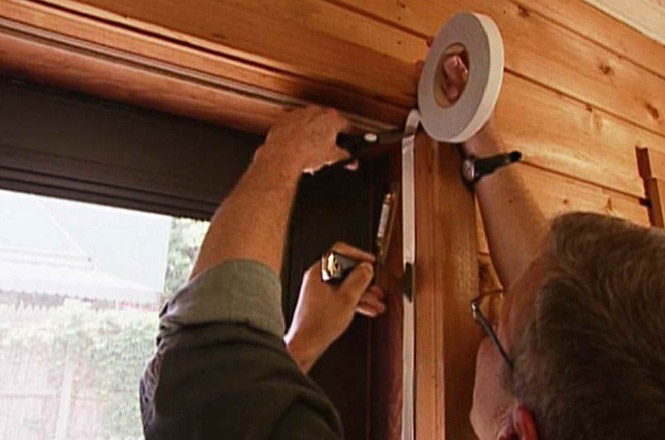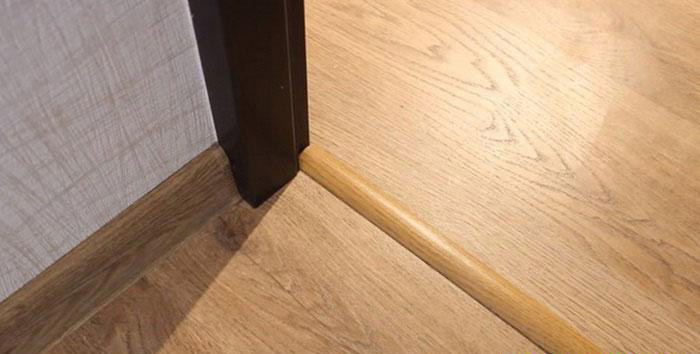Doors, their heat and sound insulation
Doors with increased thermal insulation a person usually shows interest in their performance indicators, among which the factors of sound insulation and thermal insulation will play an important role. This is a really important nuance, which is worth analyzing in detail.
If we talk about thermal insulation, then it is necessary to pay attention to a number of factors, the most important of which are the materials of both the fabric itself and the filler, as well as the thickness of the latter. The dense material and the increased layer of upholstery improves this indicator, and combining these aspects, it is possible to achieve quite attractive indicators.

Canvas and materials
Perhaps the coldest are metal doors, because this material has high thermal conductivity, and even plastic with glass are better in this respect. The warmest products are considered to be made of wood, and in practice it turns out to be quite natural. If it is necessary to improve this indicator for a metal door, the product cavity is filled with heat-protective materials.
Fillers
A domestic manufacturer usually fills metal doors with polystyrene and mineral wool, and in more rare cases, sawdust, timber, and a number of other specific materials can be used. Mineral wool is considered the best solution, because it is an eco-friendly and non-flammable solution, which can please you with the absence of influence on the operation of locks and good performance in the field of thermal insulation. As for imported doors of the same type, they are usually based on polyurethane, which is injected under pressure, and which gives maximum thermal insulation. If we talk about interior solutions, then for such doors, corrugated cardboard can also be used.
Sealing, fitting
When installing wooden doors, the issue of fitting is solved most easily – you can get rid of any unnecessary cracks, get the most tight fit. Other doors require the use of a seal to ensure a tight fit – in rare cases, they are complex, but usually you can be satisfied with types D, E. At the bottom, you can use the so-called guillotine, a metal product with a rubber tab, for sealing. At the same time, a control button is created on the box, and the gasket itself is placed on the bottom of the canvas. The side end of the door in the process of closing provides a push on the button, and the mechanism comes into action, the sealing element is extended, and drafts are excluded. When you open the door, the opposite action occurs.
Installation and its quality
With proper installation, all the existing cracks can be closed with foam, which ensures both a good strengthening of the door in the opening, and the absence of heat leakage.
Sealer – its thickness
Entrance doors need to install a good rubber seal-at least, this is the case in most cases. Along the perimeter of metal products, one or even two sealing contours are placed, if there are two of them, then the first one is placed on the box, and the second one is installed on the canvas. If you want to get rid of the draft in the room, it makes sense to put a seal on the interior doors.
The threshold and its presence
The threshold also allows you to block the path for the outgoing heat. And if a lever lock is used, then it is worth blocking the well of this lock with something.

Speaking of sound insulation
It is easier to protect yourself from heat loss than from the noise outside. And the problem here is that sound protection has mutually exclusive requirements and indicators than burglar protection, and the latter is more important, because the safety of housing for most people is above all. Manufacturers have to make a lot of effort to preserve both the protective and sound-proofing properties of the door.
It is worth paying attention to the following indicators, which are most important when creating sound-proofing properties. This is the overlap of any joints, the absence of gaps and their treatment with foam, if available. It is important to have at least a couple of seal contours between the frame and the web. The platband and the frame must be sunk into the wall. If there are hollow structures, they must be filled with a seal or a damper. Platbands are better to choose from MDF, the same applies to the lining of the inner part of the frame – for the latter, wood is also suitable.
The door block needs the most thorough insulation, and even its outer part of the lining should have a thickness of 16 mm or more. Under this element, there should be a porous insulating gasket, you can use thermofol solutions, or cork ones. The same thickness as the outer one should have the inner panel of the lining, and the gasket is needed under it, too. The portal and the platbands on the inner side should also be covered with this material.
These are not easy measures, but they are appropriate due to the high sound conductivity of the metal. There are a lot of stiffeners at the door, and the higher its protection against hacking, the more of them, and it is through them that sound vibrations are transmitted. They are not extinguished by the seal, and only the lining of the entire plane with panels helps to cope with the problem.
Pub date: 2021.05.31